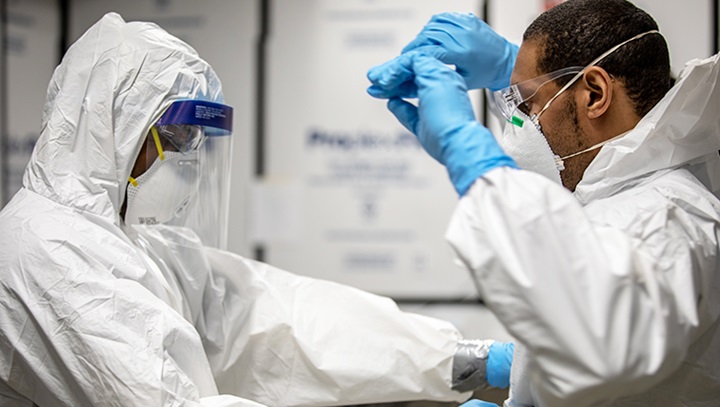Professionals who provide direct healthcare and are at greater risk of contagion with confirmed cases of SARS-CoV-2 infection are now considered high-risk contacts, according to a standard updated today.
According to the norm of the Directorate-General for Health (DGS), these health professionals are not considered high-risk contacts only if they have had the booster dose of the vaccine for at least 14 days or have a history of SARS-CoV-infection. 2 in the 180 days before contact with the confirmed case, in which case they are considered low-risk contact.
According to the norm, these health professionals join, as high-risk contacts, cohabitants with a confirmed case and all those who have had a contact with a high level of exposure and at the same time reside, attend or work in health institutions. support or reception to the most vulnerable populations.
Residential Structures for the Elderly (homes) and other similar responses dedicated to the elderly, therapeutic communities and social inclusion communities, as well as temporary reception centers and emergency accommodation centers and integrated continuing care units of the National Network for Integrated Continued Care (RNCCI).
The standard also defines that the identification of high-risk contacts for cohabitants is preferably carried out by the confirmed case through the Cases and Contacts Form, “completed and submitted by the confirmed case and integrated into the Trace COVID-19 platform”.
For those who reside, attend or work in institutions supporting the most vulnerable populations or for professionals who provide direct health care, identification as a high-risk contact is made by the territorially competent health authority.
The standard also defines that high-risk contacts are under self-monitoring for 14 days after the date of the last exposure (including the period of prophylactic isolation) and must avoid all possible contacts during isolation, including within the same dwelling, wearing a mask. surgery in indoor and outdoor spaces, comply with the protection measures defined by the DGS (physical distance and hand hygiene), self-monitor daily signs and symptoms compatible with Covid-19, as well as measure and record body temperature once a day.
If signs or symptoms compatible with Covid-19 appear, they should contact the SNS24, and a rapid antigen test for professional use can be carried out before contacting the SNS24.
The end of prophylactic isolation of high-risk contacts is established with a negative result in a laboratory test for SARS-CoV-2 performed on the 7th day from the date of the last exposure to the confirmed case, between the 8th and 13th day, based on a result negative in a laboratory test, or on the 14th day after the date of the last exposure to the confirmed case, if the laboratory test is not performed.



















Comments